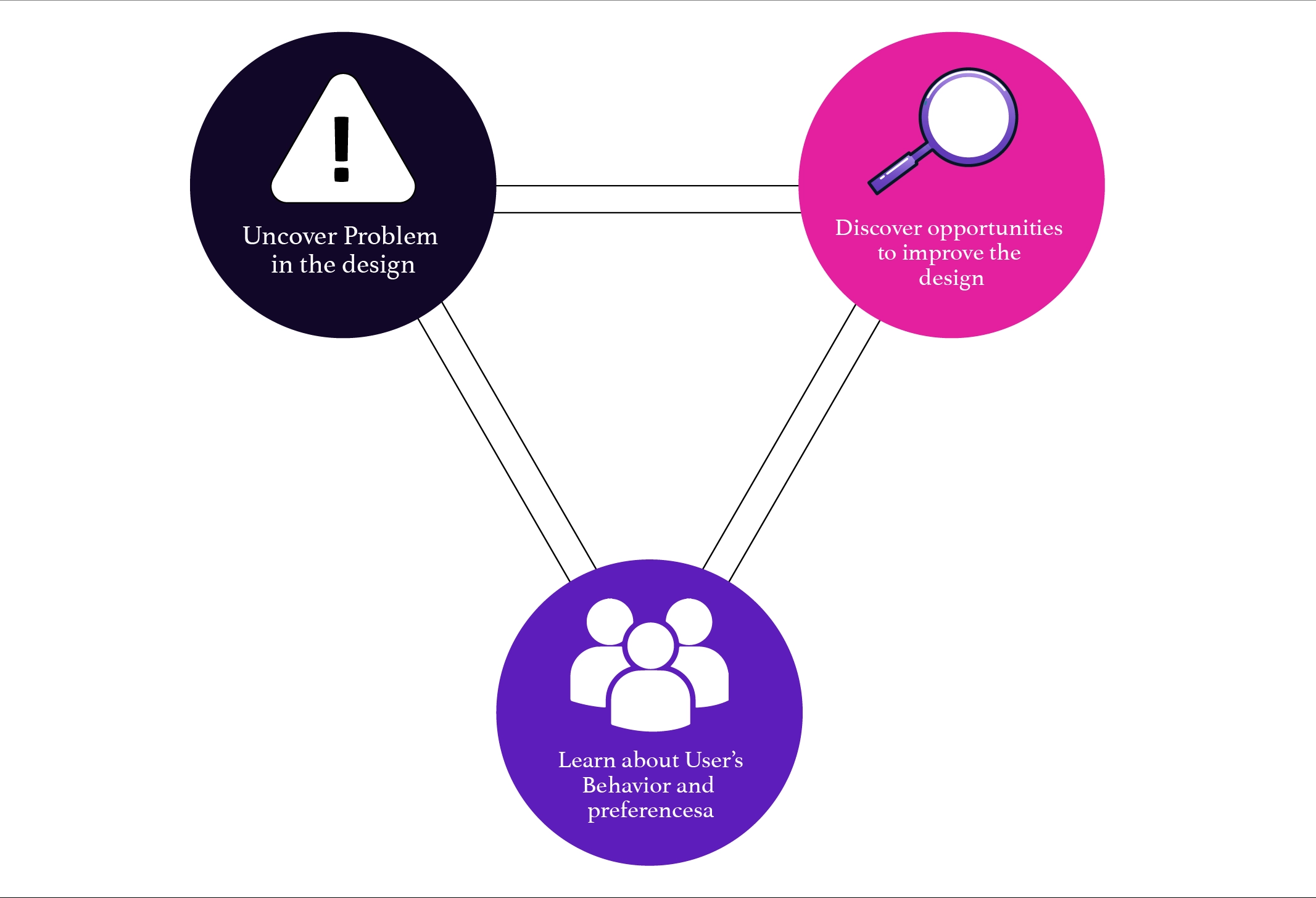Opening the Nobel Quest; Exploring Usability Testing in Customer Retention Strategy
Are you aware of this wonderful fact about Usability testing that its origin was started in the 1980s when the military conducted studies to improve the effectiveness of equipment and interfaces? Let’s see what it is. Usability testing is a type of user research that evaluates the user’s experience when interacting with a website or app. It gives an insight to designers and product teams on how intuitive and easy-to-use products are. Moreover, it is also an approach to identify the issues that users might witness or encounter when testing a certain web or mobile application, hence collecting the overall feedback about improving its usability. This practice will enable the business to also evaluate the functionality and intuitiveness of their web and mobile designs in real-world user interactions. But do you know several types of usability tests help to examine the user experience of a product? If you aren’t aware, don’t worry, we have got you covered.

In this blog post, we have dusted over the basics of usability testing, which includes its definition, types of usability testing, and its best practices as well. Further, we will also examine real-world usability testing examples and some key elements of usability testing. Additionally, we will also delve into the topic of usability testing methods and jot down a few strategies for customer retention. So, what are you waiting for? Let’s walk down the path of usability testing together.
Understanding the Essence of Usability Testing; Exploring its Significance and Purpose
So let’s see the definition of Usability testing, it is a method of organization to gain direct insights into how real people interact with software applications while performing tasks based on the functionalities of the specific website or app. It is a qualitative research approach that helps to identify usability issues and assess whether the software application is user-friendly or consists of modern web designs. This practice of usability contributes to the enhancement of the performance, dependability, and satisfaction of specific users to achieve their objectives. Over many years, as the number of competitors has increased, many businesses and firms have actively researched to understand usability. From magnifying the design and content to responsive user experience. These have become more crucial to meeting the specific goals of customers.

Are you eager to investigate the question of why to perform usability testing? Witnessing the rapid growth in technology, many firms and organizations completely rely on their brand loyalty to achieve their goals and objectives. Nowadays, people have many alternative options, if the website proves to be challenging to navigate, they are more likely to jump onto the next website. Henceforth, it is very vital to prioritize user-friendliness. Moreover, also make sure that the early detection of any specific bugs or issues can easily rectify the problem and save time, rather than delaying it, which would result in project delays and increased costs. Usability testing has various key objectives. The foremost is problem identification, which helps uncover challenges and obstacles within the software application. The second goes with discovering new opportunities for enhancing the websites and application functionality. The last is the behavioral and preferences insights of targeted users, which allows the organization to customize their products to better meet user needs and expectations.
Browsing through the Diverse Facets of Usability Testing Methodologies
Understanding the different types of testing is very crucial to improving the usability of certain web or mobile apps. The primary type of testing is qualitative usability testing, this testing focuses on gathering insights, and feedback about the user experience. This type of usability testing helps to gain a deeper knowledge of how users interact with products and also allows us to unfold the hidden pain points and identify the areas of improvement to elevate the overall user experience. Quantitative Usability testing is another type of testing that focuses on collecting numerical data to measure and analyze user actions. These data are generally in the form of metrics like task success rates, completion time, and error rates.

Moving on to another type, moderate testing also known as facilitator usability testing helps participants to ask questions and tracks participants’ engagement with the product or the user interfaces. These types of tests mainly provide real-time feedback, and more insights, further having the ability to clarify any questions that are likely to arise during the usability testing. Another type of usability testing is unmoderated usability testing, which generally occurs during the absence of a moderator. Also, unmoderated testing is inexpensive and it is appropriate for large sectors.
Remote usability testing is another type that allows participants to conduct a test remotely. It can be additionally moderated or unmoderated, and it can be conducted using online tools and communication software. With its greater flexibility, with a diverse pool of individuals, it eliminates geographical restrictions. It is very effective for prevailing inputs from remote or international users. In-person usability is another type of testing that happens physically such as in a research facility or the laboratory. The benefit of in-person testing is that it provides close observation, and fast follow-up questions in a controlled atmosphere.
Scanning into the Panorama Side of Usability Testing Methods
Let’s stroll down the path of understanding the usability testing methods commonly used to carry out certain usability testing. Guerrilla Testing is a simple and cost-effective usability testing method. Guerrilla Testing is a testing method where your product goes on a blind date with some random people who need impromptu feedback about it. Yes, it is! This testing mainly involves a quick product review with random people in public areas. This testing approach is useful to provide apt feedback during the early stage of a product development process. This testing provides prompt insights and comments on the product from real-time users in a very informal habitat.
This testing provides prompt insights and comments on the product from real-time users in a very informal habitat. Another usability testing method is in the laboratory. The lab usability testing method involves gathering people into a testing lab to use certain products. This methodology is a straightforward and hands-on approach to directly observing and assessing the usability of the product to ensure an improved user experience. Another testing method is card sorting, which eventually occurs at the starting phase of any web project. During the test, participants are given cards featuring specific subcategories and tasked with sorting them into content-related groups. This process helps quickly identify any inconsistencies, allowing for immediate correction.
Screen recording is another usability testing method that uses the software to effectively capture and examine the participant’s actions while they remotely complete the tasks. This testing enables the users to interact with a website or application on their devices while being comfortable in their own space. This usability testing method is beneficial in reaching out to a wider range of audiences and observing how the users interact with digital products. One more type of testing just like the card sorting model is the tree testing usability method. This practice generally involves website navigation along with categorizing the information that helps to gain knowledge to locate and access content within the website’s structure. This approach is especially effective in fine-tuning and improving the navigation experience, guaranteeing seamless access to the required information.
Grasping the Customer Retention Strategy Knowledge through Usability Testing
When it comes to usability testing methods for customer retention, any organization needs to haul a customer for a longer period. One of the major powerful ways to boost customer retention is to directly gather user insights. Additionally, practices like user research and usability testing allow customers to perspective on a prior basis. This will help any business organization to understand the pain points related to the product and services. Besides, with usability testing many organizations can improve the UI and UX of their product. Regular usability testing provides certain feedback from the customers to remediate the user interface and user experience. It directly aims to strengthen the retention of the customer by reducing friction and confusion. Hence this will ensure that customers will stay loyal to brands and reduce customer retention. Also by offering frequent communication through continuous engagement, the retaining of customers will stay for the long haul. However, it is advised to avoid sale-focused outreach. A better approach would be to craft a message aimed at helping users succeed with the target product or services. This customer-centric methodology approach earns attention and trust through valuable information and support.
Moreover building a strong relationship between a brand and the consumer is mutually very crucial to retain customer retention. Also, social media presents as a significant touchpoint for onboarding engagement and conversations. Integrating retention elements into social media customer services, content strategy, and community building is crucial. It is a standardized practice to address the pain points of the customers and feedback with care and concern. Test a social media campaign with targeted audiences to ensure they resonate before it gets launched. Moreover, also by addressing usability issues, businesses can minimize customer frustration and dissatisfaction which will ultimately reduce the churn rates. When customers have a positive experience with a product or service, they are more likely to remain loyal and continue using it in the long term.
The Chronologies Tales of Real World Usability Testing Examples
One example that stands out as the best for usability testing is Zara, a renowned clothing brand. Guerrilla usability testing was opted as the primary method to identify certain common challenges. The research gathered valuable information about the user’s behavior on the app. Also by using affinity mapping, they categorized the problems into groups like search, cart, credits option, and others. This methodology underwent testing with seven additional users to ensure that no usability issues or problems remained.
Another usability testing example is Quora, a popular Q&A social network. Remote usability testing was opted and five users with various backgrounds participated in this testing session. The participants were posed with a few pre-test questions about their use of social media, Quora, opinions, and standard demographic information. The test comprised nine tasks designed to simulate real-life scenarios of users engaging with the platform and testing its key features.
Furthermore, another famous example was McDonald’s. In 2016 McDonald’s launched its mobile ordering app and listed down the user testing to unfold the several issues and to evaluate the user-friendliness interface.
Closing the Boxes of Thoughts on Usability Testing with Pattem Digital
In conclusion, usability testing serves as a vital tool for organizations to boost the user experience of their digital products. By magnifying its methodologies, such as qualitative and quantitative approaches, as well as diverse testing types like guerrilla and remote testing, businesses can pinpoint user pain points and streamline their interfaces effectively. Additionally, usability testing isn’t just about identifying issues but also about fostering customer retention strategies by providing seamless experiences. Real-world examples from brands like Zara, Quora, and McDonald’s underscore the tangible benefits of implementing robust usability testing frameworks. Walking down into the passage of Pattem Digital, a leading usability testing company that is known for its innovative approaches to software development and user experience design.





